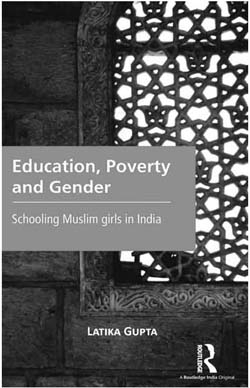Education occupies an intersecting space between economic, cultural and political spheres in society. In this context, the book under review investigates the nature of identity formation among economically deprived adolescent Muslim girls in Delhi by focusing on the interstitial spaces of the ‘home’ and ‘school’. It examines issues of religion, patriarchy and education, to interrogate the universalistic norms which are generally gendered in India. The volume using an interdisciplinary approach and multiple research methods attempts to contribute to the study of socialization and modern education among minorities and other marginalized groups. The background information of the pseudonymously named Muslim Girls School (MGS) respondents are based on the detailed depictions of family size; frequency of reference made to parents; frequency of stock phrases; frequency of illness; activities of the caretaker during illness; comment of respondents on popular perception that sons are important; characteristics of a good wife and husband; source of learning about the qualities of a good wife; respondents’ opinion about students who commit suicide and lastly the difference between private and government schools. The detailed information discussed along the various spheres of the MGS girls underscores the richness of their everyday lives.
The central arguments unravel the corpus of knowledge that Muslim girls bring home in describing ‘how their religious and gender identities persist in a subjacent sense and shape their school life as well’ (p. xvii). In this context, it explores what education can achieve if it remains regulated by the community. Latika Gupta examines the complex interplay of socio-cultural forces involved in shaping religious and gender identities by studying socialization and religious identity, and their conflict with education. Gupta’s examination of the interplay of home and school underscores the power of the ethos they jointly create. This allowed her to highlight the identity aspects of socialization and learning in Delhi. Consequently, the manuscript explores how hegemonic cultural beliefs direct the gender-consistent features in India.

